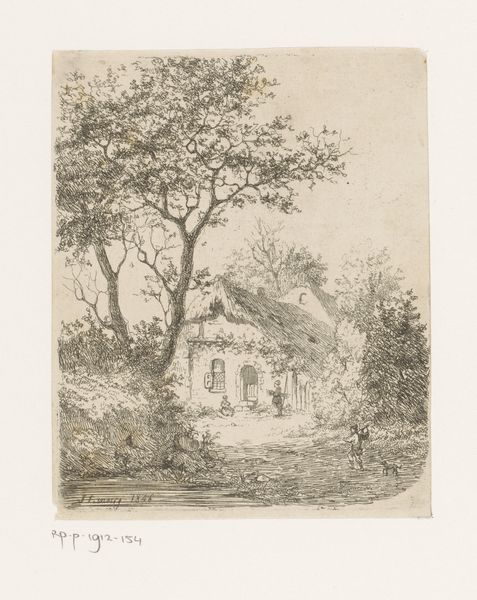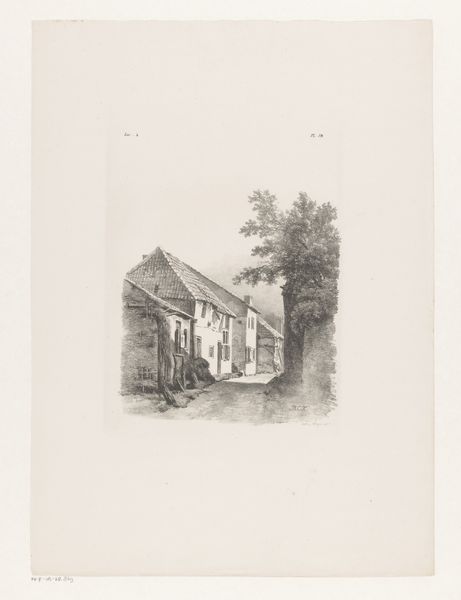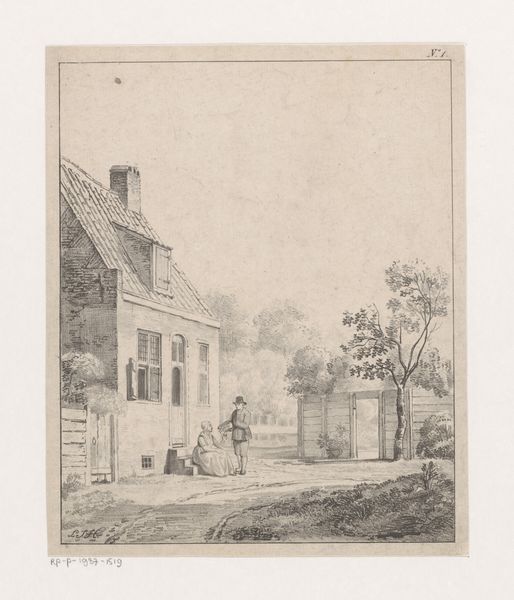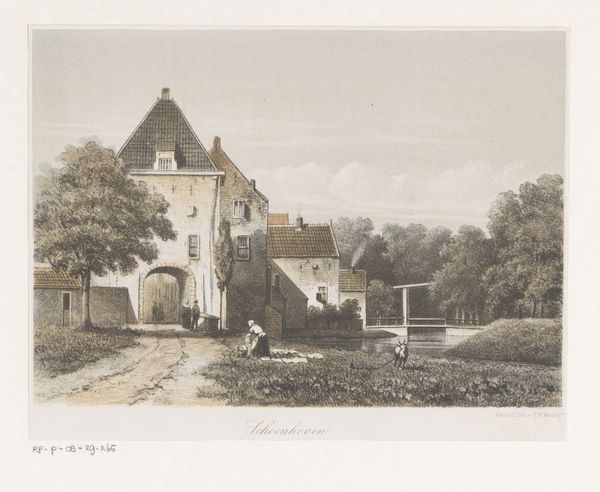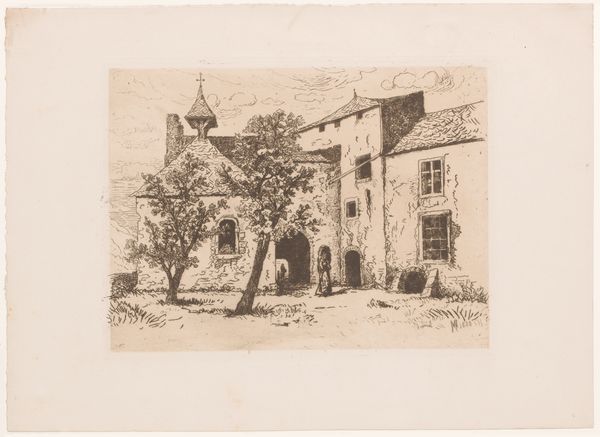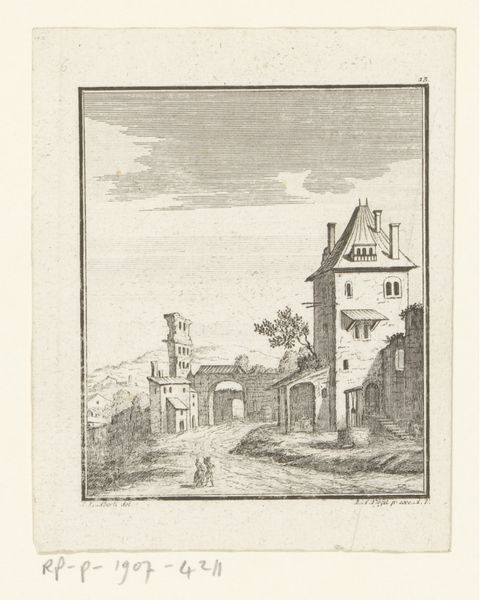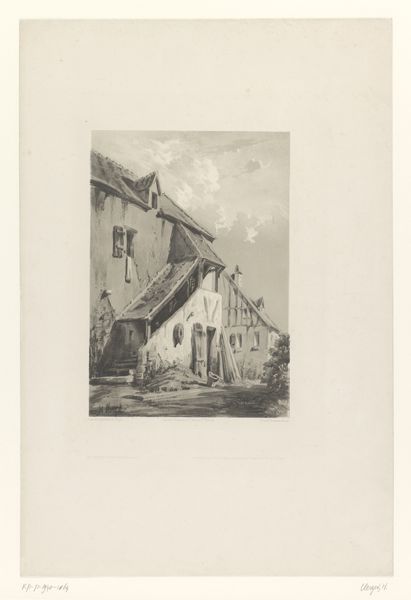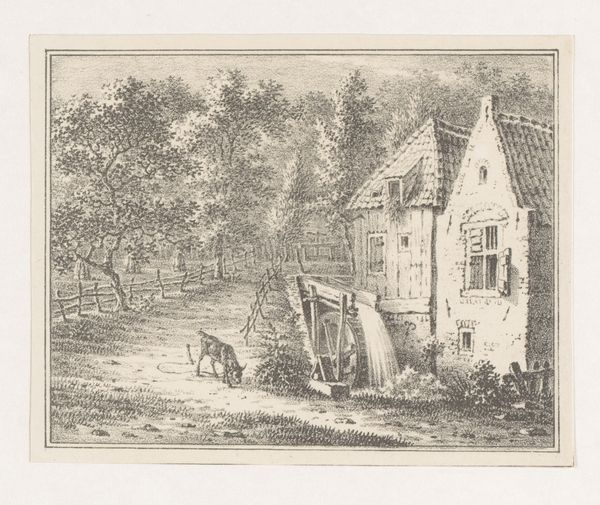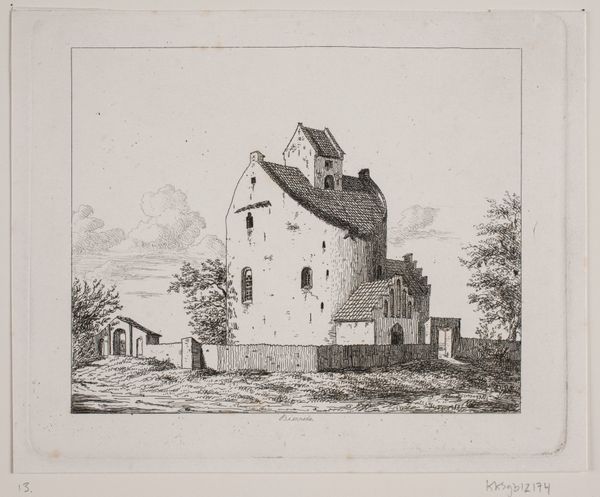
print, etching
# print
#
etching
#
landscape
#
cityscape
#
realism
Dimensions: height 206 mm, width 150 mm
Copyright: Rijks Museum: Open Domain
Curator: Editor: This is a print titled "Kasteel Keverberg te Kessel" made before 1903 by Piet Schipperus. The scene gives off a very quiet and serene feel. How might you interpret this work? Curator: As a materialist, I look at how the printmaking process itself shapes meaning. Consider etching: the artist manipulates the metal plate, applying acid, controlling the depth and darkness of the lines. The labor involved – the craft of the etching – gives this image its character, it dictates the amount of time and materials needed. The very act of creating such images and making multiple impressions would affect their meaning and how people related to the castle itself. Do you see how the lines define the materials used to create the castle in the artwork? Editor: I do see how the etched lines create form, almost like a topographical map. But how does understanding the process of printmaking help us to better interpret this image? Curator: Printmaking made images more accessible. Before photography, prints circulated views of places, disseminating them broadly. Understanding that this print was made *for* circulation transforms the meaning of the image. It’s not just a picture of a castle; it’s an object intended for consumption, impacting popular perception and cultural associations related to this place. I would even venture that such imagery had direct impact on its economics through increasing visits and cultural value. Editor: So, by focusing on the materials and processes of printmaking, you see it as an accessible, reproducible object, thereby turning an otherwise solitary viewing experience into something public. Curator: Exactly! The labor, the materiality, the means of production, these aspects completely reframe the work beyond simply a depiction of architecture, and recontextualize it within the material and social conditions of its making and consumption. Editor: That's a fascinating perspective! I'll definitely look at prints differently from now on, thinking about how they were made and their function in society.
Comments
No comments
Be the first to comment and join the conversation on the ultimate creative platform.
